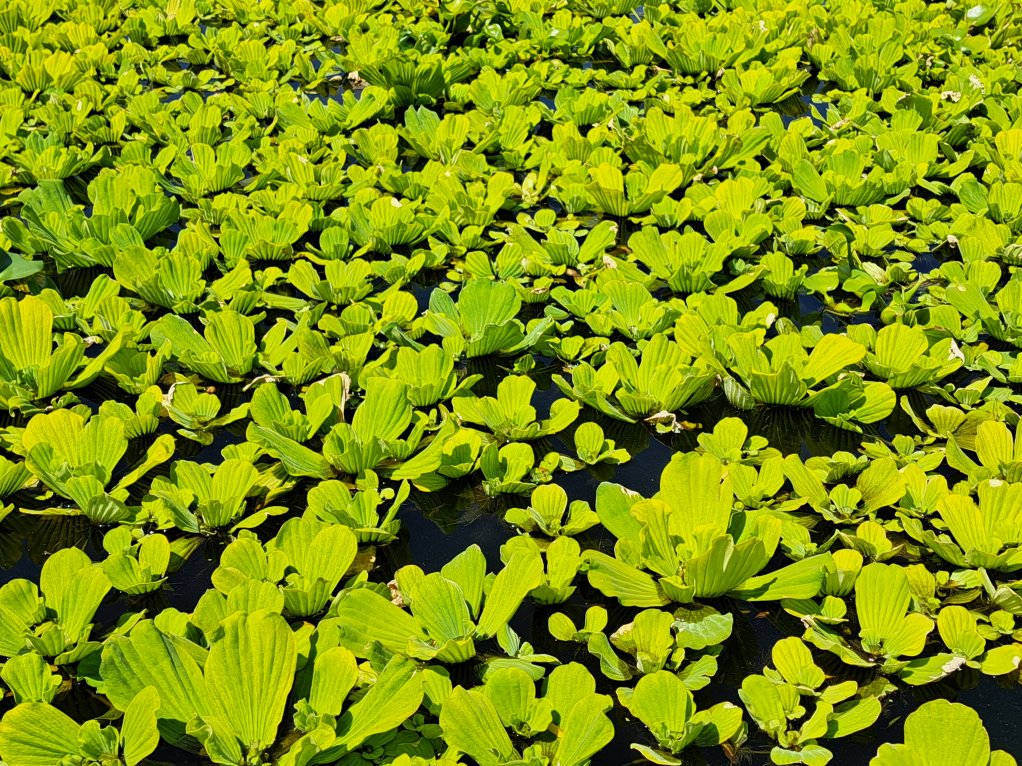
DIMINISHING
A series of interventions, including chemical control, had reduced the alien species coverage on the Vaal Barrage
Photo by: Creamer Media's Natasha Odendaal
The volume of water lettuce and water hyacinth across the Vaal River Barrage reservoir has reduced markedly over the past few months as removal efforts continue.
According to Rand Water, water lettuce and hyacinth coverage shrunk from 395 ha in April to 100 ha currently.
While water lettuce first appeared in the Vaal river as far back as 2021, flooding in 2021 and 2022 deterred the aquatic invasive species from establishing themselves..
However, with lower rainfall in the summer of 2023 and ongoing high levels of nutrients in the river, mainly from sewage, the aquatic weed grew exponentially and got out of control.
The Department of Water and Sanitation (DWS), Rand Water and local communities, besides others, were left scrambling to get the species under control and mitigate the damage it is causing.
DWS water use compliance and enforcement chief director Anet Muir previously outlined how dramatic the spread had been, with water lettuce coverage of just 3.52 ha recorded on November 2, 2023. By January, following a period of stability, this had increased to 61.27 ha, before surging to 179.56 ha by February 10 this year.
A series of interventions, including chemical control, had reduced the alien species coverage to 163.68 ha by March 6. However, following a suspension of the use of chemical control pending further investigations, the infestation had increased to 193.66 ha by March 16.
By April, 395 ha of the Vaal Barrage’s surface area of 930 ha was covered by aquatic invasive alien species, before being reduced to 100 ha by the end of June.
The latest reduction in the invasive plant species is the culmination of a close working relationship since early this year among the Vaal River community, Rand Water, the DWS, Rhodes University’s Centre for Biological Control, AfriForum, Omnia and Save the Vaal Environment.
The community, collaborating with Rand Water and various authorities, using their own resources and spending about R10-million over six months on the Vaal Barrage reservoir, assisted in removing the alien invasive species.
Federated Hospitality Association of South Africa national chairperson Rosemary Anderson says these “unsung heroes” tirelessly and generously provided the funds, resources and time to lead the way.
“Without them, we would not be winning the invasive aquatic weed war. We are also most appreciative to Omnia, which donated funds for the removal of over 7 km of aquatic alien invasive weed from the Taaibos,” adds Rand Water corporate services GM Mbuyiswa Makhubela.
The DWS appointed Rand Water as the official implementing agent for three years to control and eradicate the alien invasive weeds in the Vaal River Barrage reservoir, and the water utility is continuing its implementation of the control plan under the authorisations issued by the DWS and the Department of Forestry, Fisheries and the Environment (DFFE).
This includes an integrated approach of physical extraction, curtaining, biocontrol and the use of herbicides to halt the out-of-control growth.
“The significant contribution of the Vaal Barrage reservoir community and positive approach in working closely with all parties definitely needs to be acknowledged and applauded. I look forward to continuing this positive working relationship going forward, with government taking appropriate accountability by committing significant resources to enable sustained control over these alien invasive aquatic weeds and improvement of water quality that will ensure communities’ livelihoods are not threatened again,” says Muir. The Rhodes University Centre for Biological Control’s Professor Julie Coetzee
and Dr Kelby English assisted with various aspects such as mapping, biocontrol agents and technical support to assist with introducing weevils and hoppers to assist in controlling these alien plants.